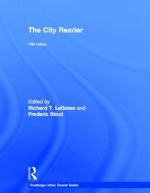
|
| Name: _________________________ | Period: ___________________ |
This quiz consists of 5 multiple choice and 5 short answer questions through Part IV: Urban Politics, Governance, and Economics.
Multiple Choice Questions
1. In comparing U.S. and U.K. governments in "Future Directions for Urban Government in Britain and America," the author concludes the American system is more what?
(a) Inept.
(b) Central.
(c) Greedy.
(d) Plural.
2. Engels writes that it is what that has crammed the people into squalor in "The Great Towns"?
(a) The musical epoch.
(b) The industrial epoch.
(c) The philosophical epoch.
(d) The critical epoch.
3. The editors write in the Introduction from the Editors that their students have asked for the past how many years what the best writings in urban development are?
(a) 35.
(b) 28.
(c) 42.
(d) 37.
4. "The Design of Spaces" is a result of a study requested by whom?
(a) The Wall Street Journal.
(b) The New York City Planning Commission.
(c) The New York Mayor's Office.
(d) The Central Intelligence Agency.
5. What is the first of several responses to developments of local governments given by the author in "Future Directions for Urban Government in Britain and America"?
(a) Cutting public spending.
(b) Frequent elections.
(c) Increasing taxation.
(d) Decreasing taxation.
Short Answer Questions
1. "Kinship and Community" and "Keeping Themselves to Themselves" describe the relationships of the working class in what British area?
2. Where can wealth and fashionable residences be found in the city from "The Almost Perfect Town"?
3. Who wrote "Place and Production in the Global Economy"?
4. What is the second of four kinds of power described by the author in "Regime Theory and Urban Politics"?
5. V. Gordon Childe writes in "The Urban Revolution" that the three revolutions separating the major eras are the urban, the industrial and what?
|
This section contains 273 words (approx. 1 page at 300 words per page) |

|




